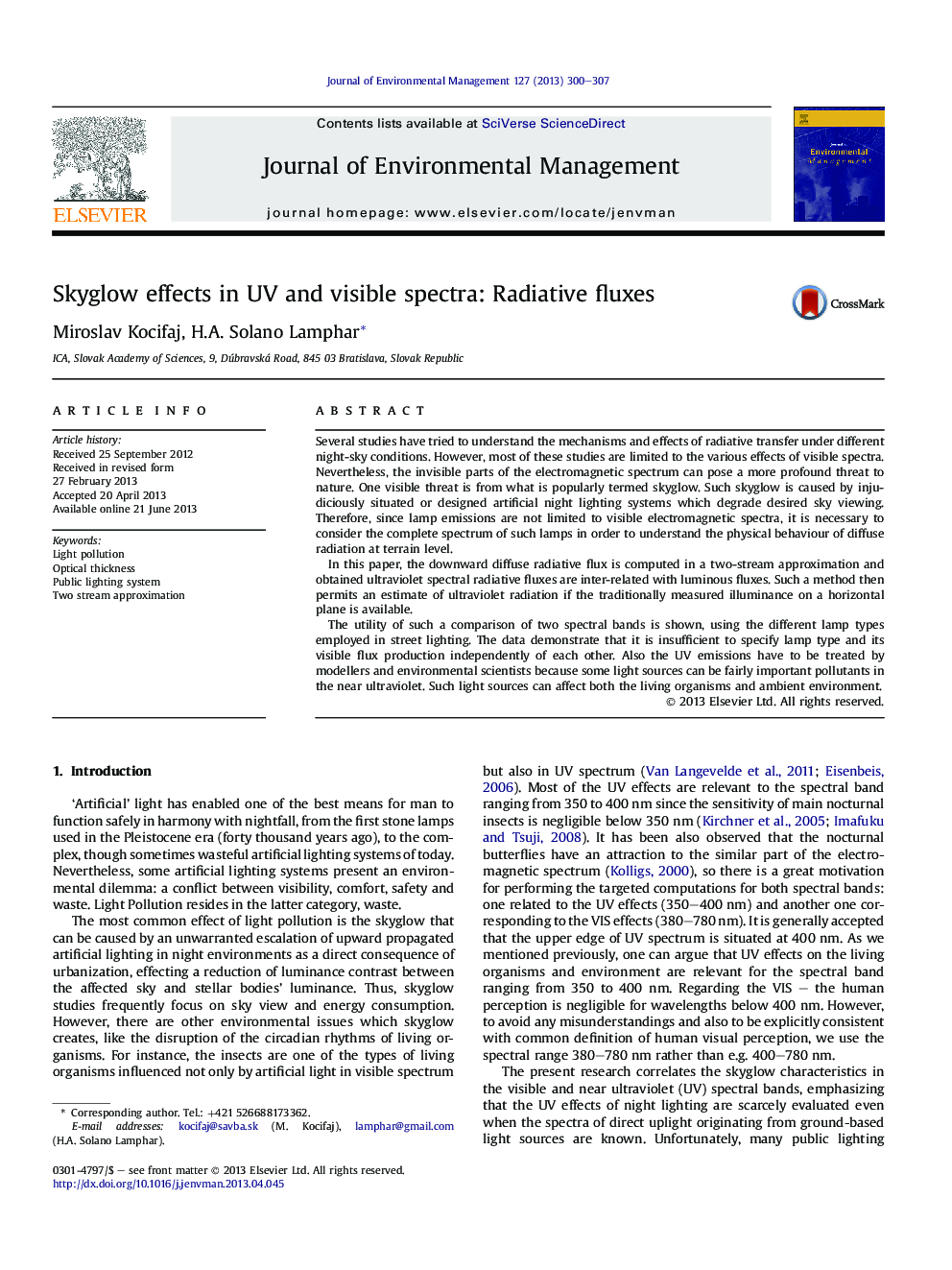| کد مقاله | کد نشریه | سال انتشار | مقاله انگلیسی | نسخه تمام متن |
|---|---|---|---|---|
| 1056033 | 1485285 | 2013 | 8 صفحه PDF | دانلود رایگان |

• UV and VIS irradiances are computed in a two-stream approximation.
• The cases of constant luminous emissions vs. constant number of lamps are analyzed.
• The light pollution (LP) effects by five commonly used light sources are interrelated.
• Both lamp-type and total illuminance requirements are equally important parameters.
• LP grows steeply with increasing the aerosol optical thickness.
Several studies have tried to understand the mechanisms and effects of radiative transfer under different night-sky conditions. However, most of these studies are limited to the various effects of visible spectra. Nevertheless, the invisible parts of the electromagnetic spectrum can pose a more profound threat to nature. One visible threat is from what is popularly termed skyglow. Such skyglow is caused by injudiciously situated or designed artificial night lighting systems which degrade desired sky viewing. Therefore, since lamp emissions are not limited to visible electromagnetic spectra, it is necessary to consider the complete spectrum of such lamps in order to understand the physical behaviour of diffuse radiation at terrain level.In this paper, the downward diffuse radiative flux is computed in a two-stream approximation and obtained ultraviolet spectral radiative fluxes are inter-related with luminous fluxes. Such a method then permits an estimate of ultraviolet radiation if the traditionally measured illuminance on a horizontal plane is available.The utility of such a comparison of two spectral bands is shown, using the different lamp types employed in street lighting. The data demonstrate that it is insufficient to specify lamp type and its visible flux production independently of each other. Also the UV emissions have to be treated by modellers and environmental scientists because some light sources can be fairly important pollutants in the near ultraviolet. Such light sources can affect both the living organisms and ambient environment.
Journal: Journal of Environmental Management - Volume 127, 30 September 2013, Pages 300–307